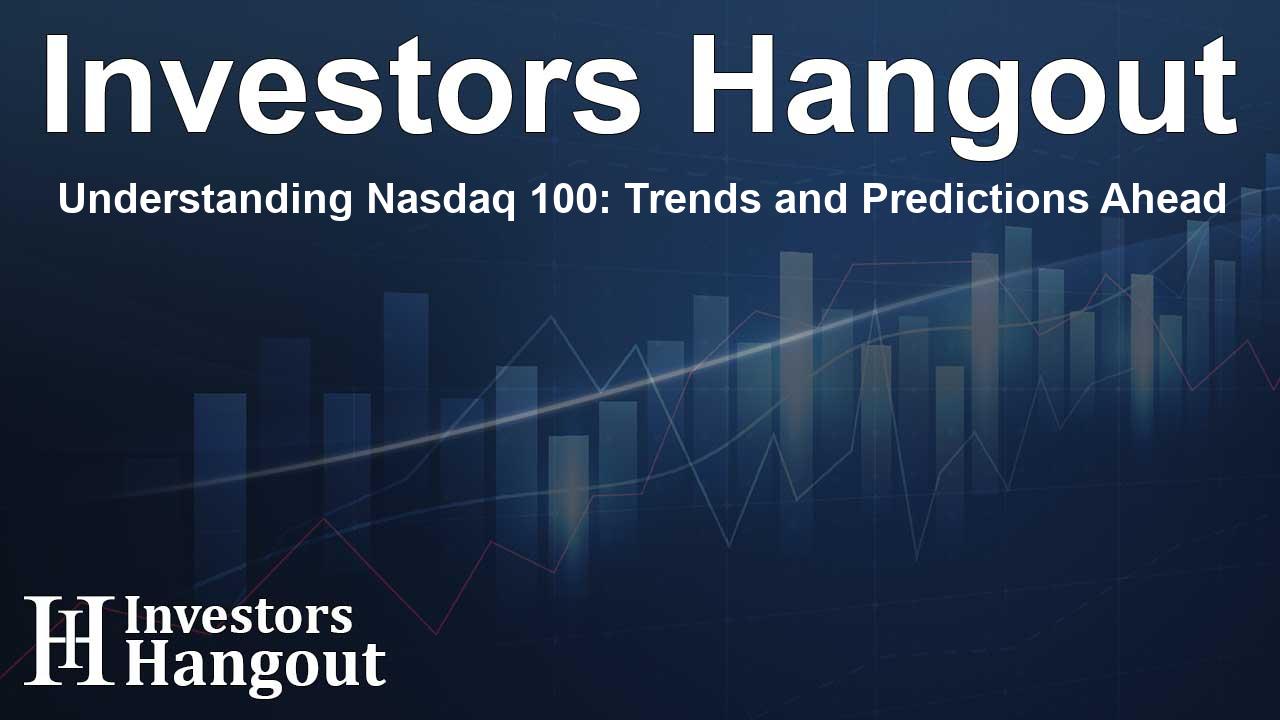Understanding Nasdaq 100: Trends and Predictions Ahead

Exploring the Dynamics of the Nasdaq 100
The interplay of volume and price at crucial support and resistance levels is a cornerstone of Volume Price Analysis (VPA). Marking these zones across various time frames has become an essential practice for traders. It’s crucial to note that levels identified on slower time frames carry more significance and influence the price action on faster charts considerably.
Identifying Support and Resistance Levels
How we pinpoint these vital levels can vary from person to person. My colleague David and I utilize a mix of traditional metrics, such as moving averages, alongside our proprietary indicators available through Quantum trading. This combination allows us to analyze the market effectively.
Volume's Impact on Price Action
We constantly emphasize to our students the importance of the relationship between price action and volume at these critical levels, which serve to validate support or resistance. For instance, looking at QQQ, an ETF tracking the Nasdaq, it is evident how market fluctuations due to external economic pressures can influence trading strategies.
The Current Market Environment
As we navigate through a volatile market characterized by uncertainties surrounding rising bond yields, a robust US dollar, and a resilient labor market, the possibility of a rate cut by the Federal Reserve seems unlikely in the near term. This sentiment is reflected in the figures from the CME Fed Watch Tool, suggesting a high probability of maintaining current rates.
Analyzing Recent Price Actions
Taking a closer look at QQQ’s hourly chart reveals that the ETF experienced a sell-off in pre-market hours. A volatile candle formed, signaling traders of potential price reversals. The Quantum volatility indicator played a vital role here, alerting us when price actions strayed outside the Average True Range (ATR) for that specific timeframe.
The Importance of Volatility Candles
The high and low of these volatility candles become pivotal levels in their own right. Following this, we noticed QQQ bouncing higher, particularly as the cash market opened, yet intriguingly, it did not breach the low established by that volatility candle. Additionally, the volume accompanying the opening candles indicated a decreasing trend, hinting at a lack of selling pressure during that time.
Potential Pause Points
Upon witnessing a reversal, traders often wonder where the price action might head next. For QQQ, the volume point of control, around the $513 area, stands out as a significant target. However, the immediate goal focuses on surpassing the high established by the volatility candle.
Upcoming Economic Indicators
Interestingly, despite some posts facing upload issues, it serves a purpose to provide updates, particularly emphasizing the resilience of the weekly Camarilla levels. Even after a pullback related to the PPI release, the market reversed higher on a candle that demonstrated both a deep lower wick and substantial volume.
The Significance of Volume Point Control
Notably, the dynamic nature of the volume point of control has shifted, indicating strong support just under the current price. This change is crucial as we prepare for the anticipated release of key economic data, such as the upcoming CPI report. Investors and traders alike are keenly observing these indicators to strategize their trades in line with potential market movements.
Frequently Asked Questions
What is the Nasdaq 100?
The Nasdaq 100 is a stock market index that includes 100 of the largest non-financial companies listed on the Nasdaq stock exchange.
How can volume affect stock prices?
Volume reflects the number of shares traded and can indicate the strength of a price movement; higher volume generally suggests stronger trends.
What are Camarilla levels?
Camarilla levels are technical indicators that help traders identify potential support and resistance levels, assisting in predicting future price movements.
Why is monitoring the Fed's actions important?
The Federal Reserve's decisions regarding interest rates can significantly impact market conditions, influencing investor sentiment and trading strategies.
How can traders prepare for economic releases like CPI?
Traders often analyze past trends, volume levels, and chart patterns while employing risk management strategies to navigate volatility around economic data releases.
About Investors Hangout
Investors Hangout is a leading online stock forum for financial discussion and learning, offering a wide range of free tools and resources. It draws in traders of all levels, who exchange market knowledge, investigate trading tactics, and keep an eye on industry developments in real time. Featuring financial articles, stock message boards, quotes, charts, company profiles, and live news updates. Through cooperative learning and a wealth of informational resources, it helps users from novices creating their first portfolios to experts honing their techniques. Join Investors Hangout today: https://investorshangout.com/
Disclaimer: The content of this article is solely for general informational purposes only; it does not represent legal, financial, or investment advice. Investors Hangout does not offer financial advice; the author is not a licensed financial advisor. Consult a qualified advisor before making any financial or investment decisions based on this article. The author's interpretation of publicly available data shapes the opinions presented here; as a result, they should not be taken as advice to purchase, sell, or hold any securities mentioned or any other investments. The author does not guarantee the accuracy, completeness, or timeliness of any material, providing it "as is." Information and market conditions may change; past performance is not indicative of future outcomes. If any of the material offered here is inaccurate, please contact us for corrections.